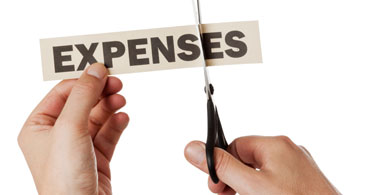6 Spend Management Tips for Success
Here are six effective ways to leverage spend management and obtain a more holistic view of your purchasing organization
2013-11-19
 Defined as “the way companies control and optimize the money they spend,” spend management is a best practice that can yield a wide range of benefits for purchasing organizations. It encompasses the full purchasing lifecycle—from sourcing goods and selecting suppliers to setting up contracts and paying suppliers—and helps buyers take a holistic view of procurement from a competitive vantage point.
Defined as “the way companies control and optimize the money they spend,” spend management is a best practice that can yield a wide range of benefits for purchasing organizations. It encompasses the full purchasing lifecycle—from sourcing goods and selecting suppliers to setting up contracts and paying suppliers—and helps buyers take a holistic view of procurement from a competitive vantage point.
According to Deloitte, spend management goes beyond the sourcing and procurement function, requiring business units, finance and functions with large spend to align themselves around key spend categories. It provides a comprehensive view, addressing all relevant processes across all the organization’s external spend categories, focuses on continuous process improvement and renewable cost savings, and provides greater control over spending and risks.
“Put simply, spend management helps organizations control and optimize every dollar they’re spending,” says Paulo Moretti, principal at Detroit-based supply chain consulting firm PM2Consult. Here are six ways your purchasing department can begin leveraging spend management to its advantage:
- Aggregate expenses organization-wide. Expansions, acquisitions, geographically dispersed locations and disparate technology infrastructures can all wreak havoc on a buyer’s ability to gain company-wide efficiencies. By bringing some or all of these fragmented entities onto the same page, Moretti says buyers can begin to see the benefits of spend management. Instead of using location-specific contracts for office or janitorial supplies, for example, use a company-wide contract. “This is a fairly quick fix for reducing costs and increasing purchasing efficiencies,” says Moretti.

“Put simply, spend management helps organizations control and optimize every dollar they’re spending,” says Paulo Moretti, principal at Detroit-based supply chain consulting firm PM2Consult.Next, aggregate knowledge to improve negotiating power. Effective spend management goes beyond just making better purchase decisions. It also involves making more educated buys on a company-wide basis. Buyers can tap into this benefit, says Moretti, by focusing on a specific commodity or product category, getting to know its ins and outs and then sharing that information with other purchasing departments within the company. “When you aggregate knowledge,” says Moretti, “you gain negotiating power.”- Get leaders and managers onboard. In order to glean the maximum benefits from a spend management program, the initiative has to involve more than just one or two purchasing agents. In Tapping the Value in Spend Management, Deloitte tells companies to identify and assign responsibilities across the organization. “Spend management requires coordinated leadership and management from several areas across the organization. Key buying decisions and interactions with suppliers should be distributed across business units and functions.” During this exercise, be sure to highlight and define implicit roles. “Many key spend management processes are often not recognized, much less managed,” Deloitte points out. “Don’t let lack of clarity affect critical processes such as category strategy or asset management.”
- Put the spotlight on indirect spend management. Spend management is often used for direct spend, but it’s also effective for indirect spend areas like maintenance, repair and operations (MRO) supplies and services (or, other expenses that don’t go into a finished product). “At most organizations, MRO purchasing is ripe for spend management, consolidation and optimization,” says Moretti. “When these expenses are better managed, buyers gain purchasing power across the organization.”
- Perform periodic supplier audits. This is another good spend management tactic that helps buyers keep tabs on long-term contracts and supplier relationships. Review top expense categories on a regular basis (to circumvent “price creep,” for example), compare current market pricing to what your firm is paying, and work with the accounts payable department to make sure all contracts, invoicing and remittances align with the negotiated pricing and terms.
- Strive for centralization. Effective spend management starts with the purchasing organization and works best when buys are either centralized or coordinated across various departments. “The more you can centralize procurement, the more power you’ll gain and the more you’ll get out of your spend management strategies,” says Moretti. A large company that employs one purchasing agent at each of its plants, for example, should focus on centralizing those activities in order to gain buying power, better positioning with vendors and improved communications across the organization.
聲明:各作者及/或論壇參與者於本網站所發表之意見、理念和觀點,概不反映 DigiKey 的意見、理念和觀點,亦非 DigiKey 的正式原則。








